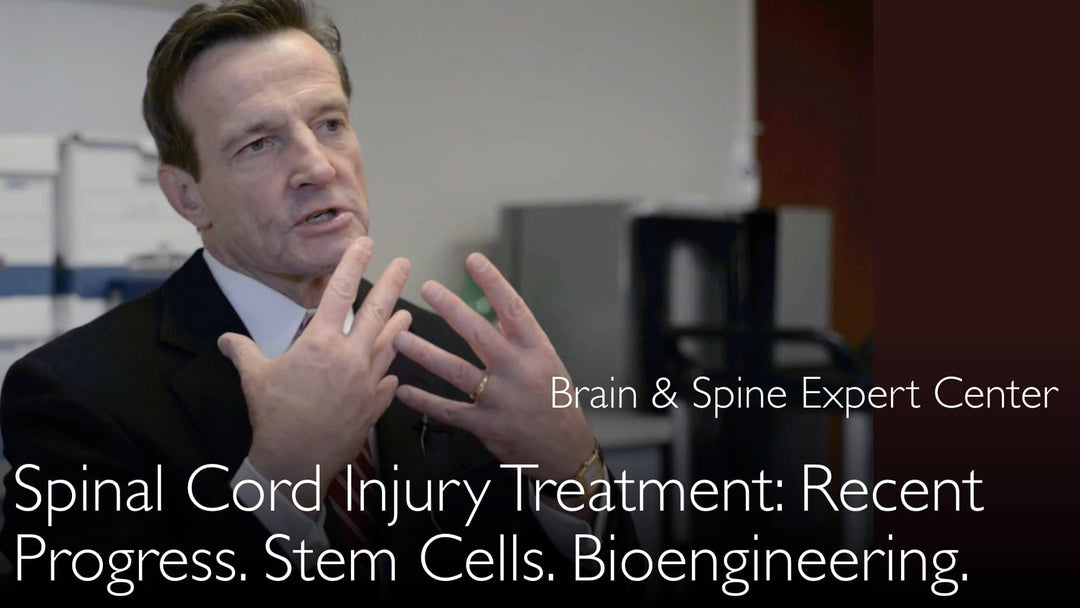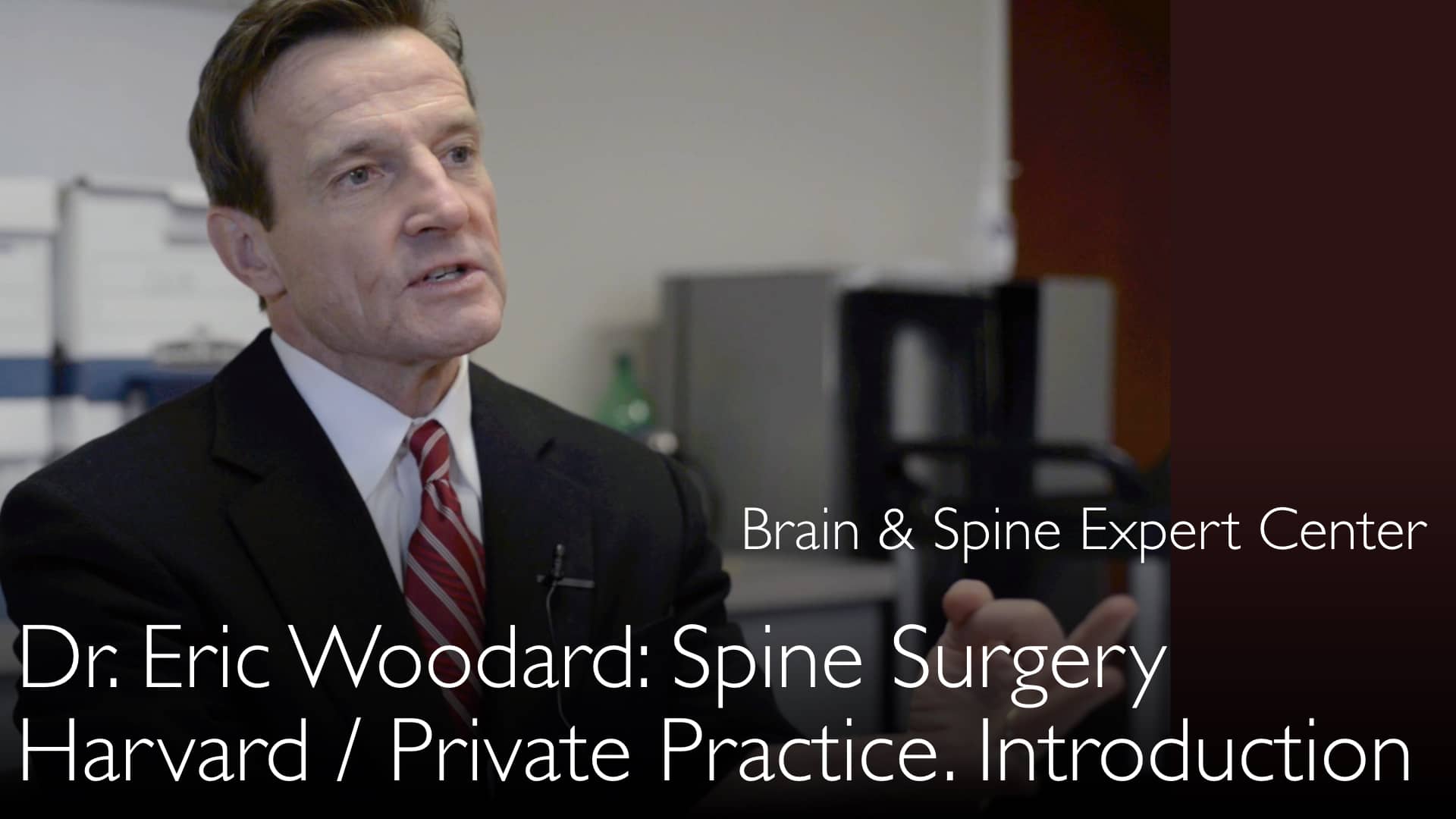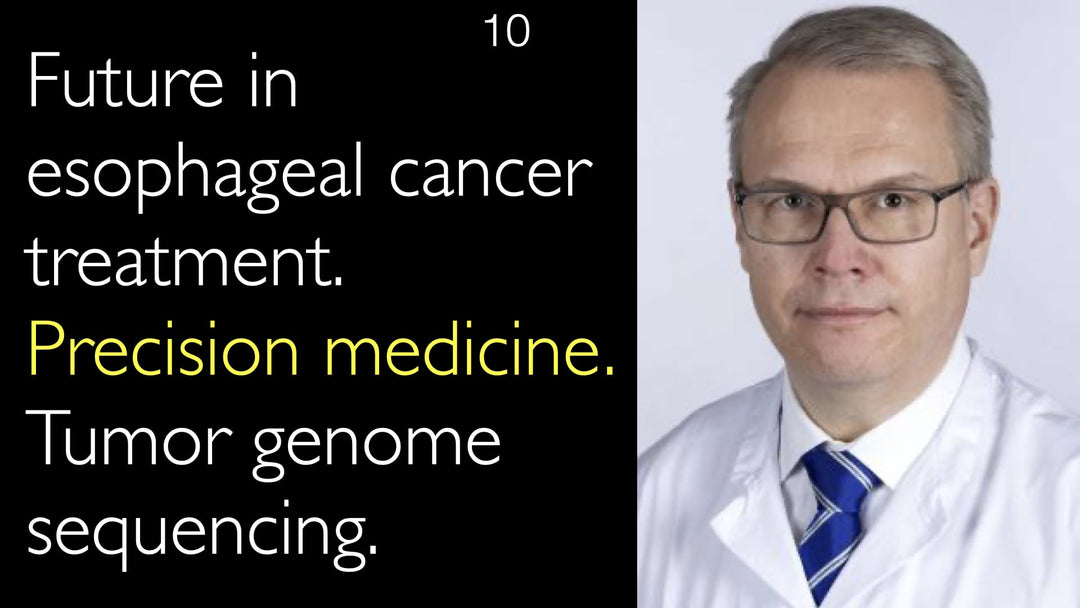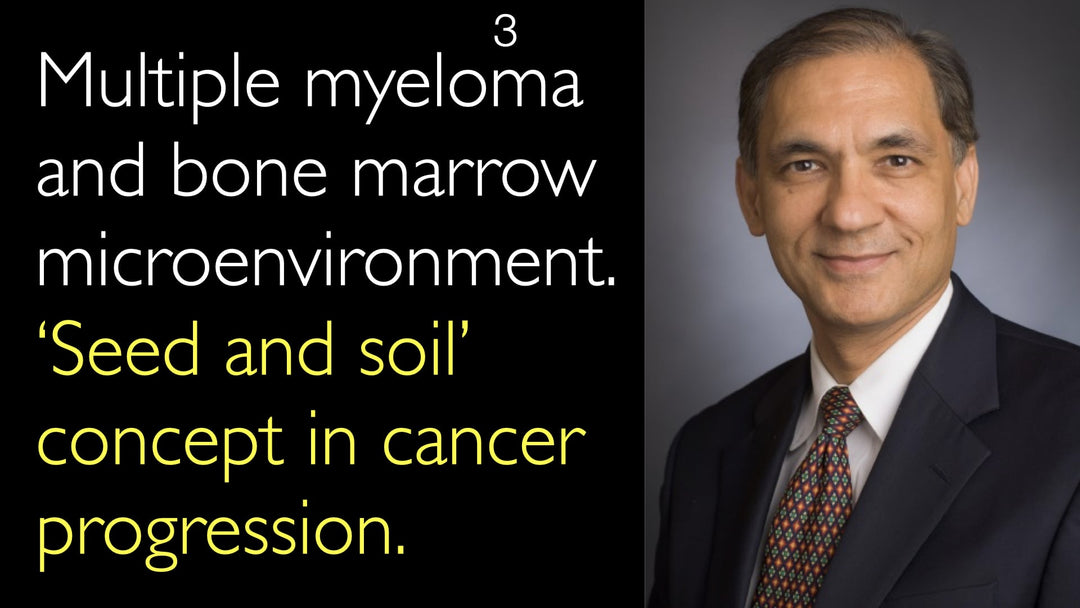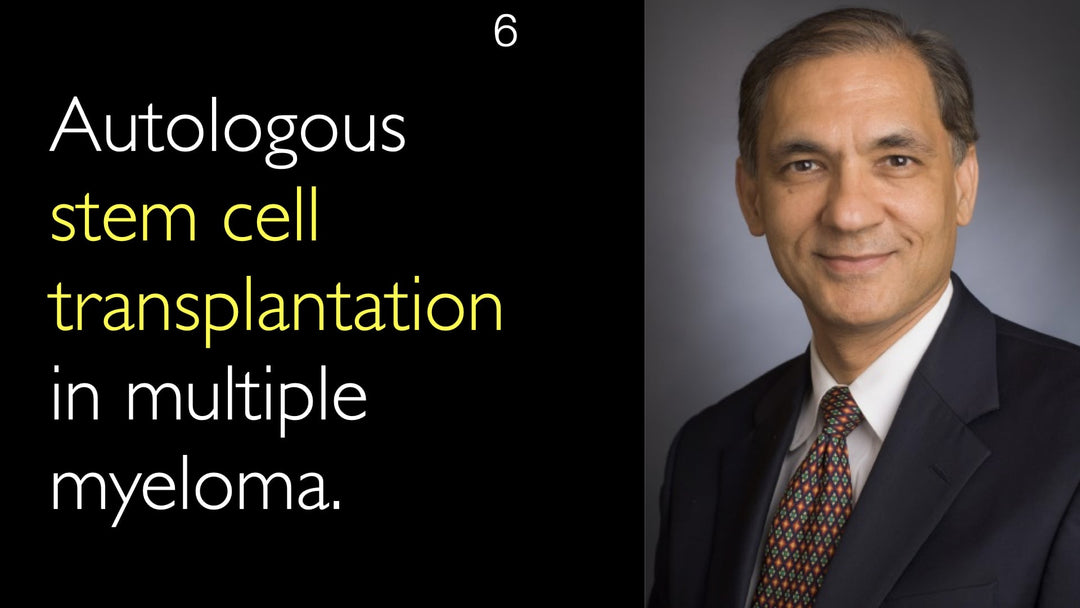O renomado especialista em lesão medular, Dr. Eric Woodard, descreve a evolução do tratamento para esse diagnóstico devastador. Ele detalha a transição dos cuidados meramente paliativos e o papel limitado dos esteroides. Dr. Woodard ressalta o enorme potencial da terapia com células-tronco combinada com estruturas de engenharia tecidual. Também aborda os ensaios de segurança em curso, aprovados pela FDA (Food and Drug Administration), que utilizam essa tecnologia avançada. O especialista ainda alerta os pacientes sobre clínicas de células-tronco sem comprovação científica e enfatiza a importância de tratamentos baseados em evidências.
Avanços no Tratamento da Lesão Medular: Dos Cuidados de Suporte à Terapia com Células-Tronco
Navegar para a Seção
- Abordagens Atuais de Tratamento
- Papel dos Esteroides na Lesão Medular
- Potencial da Terapia com Células-Tronco
- Engenharia Tecidual e Scaffolds
- Ensaios Clínicos e Perspectivas Futuras
- Evitando Tratamentos Não Comprovados
- Transcrição Completa
Abordagens Atuais de Tratamento para Lesão Medular
O tratamento da lesão medular tradicionalmente concentra-se nos cuidados de suporte imediatos. O Dr. Eric Woodard, MD, explica que o objetivo principal é estabilizar o quadro clínico do paciente, o que inclui manter a pressão arterial adequada e outras funções fisiológicas essenciais. Os cirurgiões também atuam para remover eventuais compressões da medula espinhal, como fragmentos ósseos fraturados ou discos gravemente herniados.
A descompressão da medula espinhal cria o ambiente ideal para a cicatrização. A lesão inicial frequentemente representa apenas uma fração do dano total, pois a resposta inflamatória subsequente pode causar prejuízos muito maiores. Esse conceito é central para as estratégias modernas de tratamento do trauma medular.
Papel dos Esteroides na Lesão Medular
Esteroides em altas doses já foram um pilar do tratamento agudo da lesão medular. O Dr. Eric Woodard, MD, explica que eles visavam reduzir a inflamação secundária, também conhecida como "lesão secundária", que pode danificar até 40% adicionais da medula além do trauma inicial. A ideia era que suprimir essa inflamação poderia preservar mais tecido neural viável.
No entanto, extensos ensaios clínicos demonstraram que os esteroides oferecem benefícios mínimos. O Dr. Eric Woodard, MD, observa que seu uso prolongado, na verdade, aumenta o risco de complicações. Por essa razão, o emprego de altas doses de esteroides para lesão medular diminuiu drasticamente nos Estados Unidos. A busca por tratamentos anti-inflamatórios eficazes continua.
Potencial da Terapia com Células-Tronco para Reparo Medular
A terapia com células-tronco representa uma fronteira revolucionária no tratamento da lesão medular. O Dr. Eric Woodard, MD, descreve as células-tronco como células especializadas capazes de se diferenciar em diversos tipos teciduais, incluindo tecido cerebral e neural. A esperança é que elas possam regenerar a medula espinhal lesionada e reverter os danos.
As pesquisas iniciais envolviam a injeção de células-tronco diretamente no local da lesão aguda. O Dr. Eric Woodard, MD, explica que essa abordagem frequentemente falhava, pois o ambiente inflamatório tóxico presente logo após a lesão destruía as células injetadas. A pesquisa então migrou para aplicações nas fases subaguda e crônica, que se mostraram mais promissoras para a regeneração medular.
Engenharia Tecidual e Scaffolds para Suporte Medular
Os avanços mais promissores combinam células-tronco com técnicas de engenharia tecidual. O Dr. Eric Woodard, MD, participa de um grupo de pesquisa no MIT que desenvolve essa abordagem, utilizando um scaffold biodegradável que imita a matriz extracelular natural do organismo. Esse suporte oferece estrutura física e um ambiente nutritivo para as células-tronco.
Esses scaffolds podem ser enriquecidos com proteínas e fatores de crescimento, que protegem as células-tronco e orientam sua diferenciação em tecido neural. O scaffold em si se decompõe e é absorvido pelo organismo à medida que se integra ao tecido saudável. Essa estratégia combinada é uma área muito ativa e promissora da pesquisa medular.
Ensaios Clínicos e o Futuro do Tratamento Medular
Pesquisas de ponta estão avançando rapidamente para ensaios clínicos em humanos. O Dr. Eric Woodard, MD, revela que um estudo de segurança aprovado pela FDA já está em andamento, com o primeiro paciente recebendo um implante combinado de células-tronco e scaffold apenas três semanas antes da entrevista. Esse marco representa um avanço significativo na transição da pesquisa laboratorial para a prática clínica.
O Dr. Anton Titov, MD, e o Dr. Woodard discutem a perspectiva realista para essas terapias. Espera-se que as técnicas de engenharia tecidual se tornem adaptáveis a lesões medulares no futuro, com potencial para transformar o prognóstico dos pacientes dentro da próxima década.
Evitando Tratamentos Não Comprovados para Lesão Medular
Pacientes e familiares afetados por lesão medular estão vulneráveis à desinformação. O Dr. Eric Woodard, MD, reconhece o impulso emocional de buscar qualquer tratamento possível, mas alerta especificamente contra "clínicas de células-tronco" de má reputação que oferecem terapias não comprovadas e sem embasamento científico.
O Dr. Eric Woodard, MD, enfatiza que as verdadeiras tecnologias de células-tronco devem ser validadas cientificamente antes de serem disseminadas. O Dr. Anton Titov, MD, reforça a importância de buscar cuidados baseados em evidências e obter uma segunda opinião médica para confirmar o diagnóstico e garantir o acesso às terapias mais avançadas e legítimas disponíveis.
Transcrição Completa
O tratamento da lesão medular com células-tronco traz grande esperança de melhorar a qualidade de vida dos pacientes. Um renomado cirurgião de coluna de Boston compartilha sua vasta experiência no tema, enquanto um neurocirurgião detalha os últimos avanços em engenharia tecidual.
Scaffolds e terapia com células-tronco devem transformar dramaticamente o prognóstico da lesão medular na próxima década. Novos progressos na engenharia tecidual medular estão em desenvolvimento.
O tratamento com células-tronco para lesões medulares envolve scaffolds teciduais que fornecem fatores de crescimento e nutrientes às células. Terapias baseadas em células-tronco exigem suporte estrutural para controlar a inflamação secundária.
O tratamento da lesão medular com células-tronco avança rapidamente para a prática clínica. Uma segunda opinião médica após trauma medular assegura que o diagnóstico seja preciso e completo, além de auxiliar na seleção de terapias avançadas.
Obtenha uma segunda opinião médica sobre lesão medular e tenha confiança de que seu tratamento é o melhor. A terapia com células-tronco e engenharia tecidual traz nova esperança para pacientes e suas famílias.
O reparo da medula espinhal lesionada com scaffolds biomateriais avança o tratamento e a reabilitação. Os progressos no manejo das lesões medulares oferecem esperança para melhores desfechos clínicos.
Dr. Anton Titov, MD: A terapia com células-tronco curará a lesão medular?
Dr. Eric Woodard, MD: Esperamos que ajude a regenerar a medula espinhal lesionada e reverter os efeitos da inflamação secundária.
Dr. Anton Titov, MD: Lesão medular. Este é um tema muito importante. Pacientes e famílias costumam ficar devastados física e psicologicamente. Muitos, na desesperança, recorrem a tratamentos sem embasamento científico.
Dr. Anton Titov, MD: Você lida muito com lesão medular, uma de suas principais áreas de atuação. O que é mais benéfico para os pacientes a curto prazo?
Dr. Anton Titov, MD: E o que funciona a longo prazo?
Dr. Eric Woodard, MD: É uma questão fascinante. Carreiras inteiras são dedicadas ao estudo da lesão medular.
Em minha posição anterior em Harvard, no Brigham and Women's Hospital, como Diretor da Divisão de Coluna, infelizmente acompanhamos muitos casos de lesão medular, tanto cervical quanto torácica.
Felizmente, o tratamento está evoluindo. Tradicionalmente, era puramente de suporte, focando em manter a pressão arterial e outras funções fisiológicas do paciente lesionado.
Também nos concentramos em remover compressões, como ossos fraturados ou discos gravemente herniados, para aliviar a pressão sobre a medula e criar um ambiente favorável à cicatrização. Manter a pressão arterial adequada é igualmente crucial.
Esses eram os pilares do tratamento—basicamente de suporte. Há alguns anos, incorporou-se o uso de esteroides na tentativa de reduzir o edema e a inflamação adicional que segue à lesão medular.
Essa inflamação pode causar mais danos após a lesão inicial.
Dr. Anton Titov, MD: Como uma síndrome compartimental, de certa forma...
Dr. Eric Woodard, MD: De certa forma, sim. Há a lesão inicial, digamos, em 10% da medula. Depois, mais 40% pode ser lesionado apenas pela inflamação.
Em teoria, se for possível controlar essa inflamação—chamada lesão secundária—, pode-se salvar mais tecido medular viável.
Dr. Anton Titov, MD: Na fase superaguda...
Dr. Eric Woodard, MD: Exato, logo após o trauma. Imediatamente após o evento que causou a lesão. Muitos se entusiasmaram com modelos experimentais usando esteroides em altas doses para reduzir essa inflamação.
Com o tempo, excelentes ensaios clínicos avaliaram a eficácia dos esteroides. Infelizmente, eles têm impacto mínimo no desfecho. Na verdade, o uso prolongado de esteroides logo após a lesão causa mais complicações do que benefícios.
Houve muito entusiasmo no passado, mas os estudos mostraram que não há benefício significativo. O uso prolongado aumenta o risco de complicações graves. Por isso, nos Estados Unidos, o uso de altas doses de esteroides em lesão medular está em declínio.
Nos últimos dez anos, houve grande interesse em regenerar tecido medular com tecnologias de células-tronco. Como você sabe, células-tronco são células especializadas que podem se diferenciar em praticamente qualquer tecido—cerebral, cutâneo, muscular—se estimuladas no ambiente certo.
São células primitivas, muito similares às embrionárias, e constituem hoje um campo de estudo à parte. Sua aplicação na lesão medular desperta grande interesse.
Há muita pesquisa em andamento, especialmente na China e na Europa, com tentativas de injetar células-tronco em lesões medulares agudas, como contusões ou concussões.
Um dos problemas é a inflamação pós-lesão, que mencionei ao falar dos esteroides. Esse ambiente inflamatório é quase tóxico, matando não apenas tecido medular saudável, mas também as células-tronco injetadas.
A injeção aguda de células-tronco na contusão não demonstrou melhorar significativamente o quadro.
Dr. Anton Titov, MD: Os ensaios a que você se refere envolviam injeção de células-tronco na medula espinhal.
Dr. Eric Woodard, MD: Exato. Houve ensaios clínicos investigando a injeção nas fases subaguda e crônica, que parecem ter resultados um pouco melhores. No entanto, na fase subaguda, grande parte do dano já está consolidada.
Vários grupos estudam a engenharia tecidual, que combina células-tronco com uma matriz extracelular artificial ou scaffold, simulando o ambiente de suporte do tecido normal.
Tive a sorte de colaborar com um grupo aqui no MIT, em Boston. Esses scaffolds podem ser enriquecidos com diversos elementos—são biodegradáveis, decompõem-se e integram-se ao tecido normal.
É possível incorporar proteínas, fatores de crescimento e outros componentes protetores e nutricionais para as células-tronco, influenciando sua diferenciação em tecido neural.
A combinação de scaffold, engenharia tecidual e células-tronco é uma área de pesquisa muito ativa. De fato, iniciamos recentemente um ensaio de segurança aprovado pela FDA, e o primeiro paciente recebeu a injeção do scaffold combinado no local da lesão há apenas três semanas.
Células-tronco e engenharia tecidual são campos atuais e empolgantes. No futuro, essas técnicas serão adaptadas para lesões medulares.
Dr. Anton Titov, MD: É crucial destacar que, embora as células-tronco sejam amplamente discutidas, muitos pacientes pelo mundo recebem ofertas de tratamentos sem embasamento científico, inclusive terapias com células-tronco não comprovadas.
Dr. Eric Woodard, MD: Infelizmente, é verdade. Existem muitas "clínicas de células-tronco" não confiáveis. Pessoas emocionalmente abaladas por lesões medulares buscam qualquer possibilidade de melhora—o que é compreensível.
No entanto, as tecnologias de células-tronco precisam ser rigorosa e cientificamente validadas antes de serem disseminadas ao público. Tratamento de lesão medular com células-tronco. Entrevista em vídeo com renomado cirurgião de coluna e cientista. Engenharia tecidual e células-tronco em novos ensaios clínicos.


